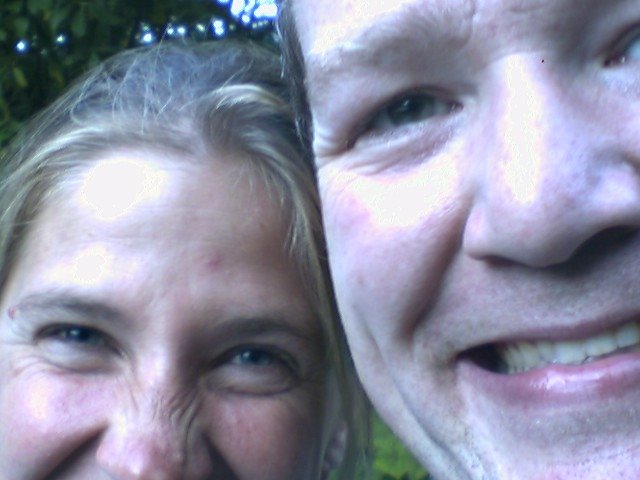Today I went with my dad to visit my mother’s grave site for the first time. I found myself feeling disturbed and furious. I don’t know whether my emotions were right or wrong, nor whether they were normal or abnormal (and I use these terms in the way my psychology training has taught me–in the sense of where they fall on the distribution)
My mom died very nearly three months ago, June 27, 2008. Her body was burned, and the ashes, which my father tells me were heavier than one might expect (one of the many and ongoing surprises, mostly painful, which my father keeps butting up against in the aftermath of my mom’s death), were placed in one of these vaults at Tahoma national cemetery. She was 57 years old, and had been healthy all her life before being diagnosed with ovarian cancer in 2004.
I found the burial method very very disturbing. My mothers ashes are somehow forever separated from … nature–from the sun, the wind, the dirt, the natural cycle of things. Separated by cement and steel. I decided I must take steps to make sure this doesn’t happen to my mortal remains.
I also found the burial *place* very disturbing. There are 139 national cemeteries in the U.S., and they are almost exclusively for the burial of U.S. military personnel and their spouses (or spice, if you wish). My mother “served” in the U.S. air force from 1970 to 1981, so she had the right to be buried here.
It seems like part of the glorification of war in this country, which, I think it might reasonably be argued, glorifies war more effectively than most other nations. If you “serve” in the U.S. military, one of the many benefits you can look forward to is the right to be buried in a national cemetery, with beautifully landscaped grounds and promised maintenance and so forth for as long as the U.S. federal government exists.
But what have all these people who “served” in the U.S. military done? I don’t mean what have they done *individually*. I mean what have they done *collectively*? How many people have they (we) killed?
My mother’s gravestone says “Vietnam” on it, because she “served” during the era of the Vietnam war. During that same era, the U.S. military (that is, “we”) was certainly largely to blame for the deaths of some 5 million Vietnamese people. I am led to wonder what sort of burial, what sort of cemeteries, were afforded to those 5 million? Anything like the beauty of Tahoma National Cemetery? Somehow I doubt it.
I don’t understand the whole cemetery/burial thing at all. I found it really disturbing that so many flowers had been placed there. There are 6 billion living people on the planet, many of whom, no doubt, would be enormously delighted to receive flowers. How many flowers are delivered to the dead every week? It seems a shocking waste of beauty and joy, to attempt to give it to the dead.
My mother isn’t *here* anymore. She’s not here, and she’s not there. Her actions and her words live on in seen and unseen ways in the people she was in relationship with, probably more than anyone else in my sister and me. We can’t escape the truth of that, both the nasty and glorious parts of it. But the actual real her is *gone*. It doesn’t make sense to me confine the ashes of her dead body to a “niche” in a cemetery. If for no other reason than that the cost of building and maintaining the cemetery could go toward alleviating the suffering of some people who don’t have enough food to eat.
I have the sneaking suspicion that my *thoughts* on this whole subject are *way* out in the tails of the distribution–4+ standard deviations out. Ah well.
As for my *feelings* on the subject–I’m out of touch with them. I have feelings about the … general concepts–feelings engendered by my thoughts. But in terms of feelings about my loss specifically, I … can’t find them. Maybe I’m still in denial. Maybe I’m still obeying, against my own will and better judgment, the rule which my mother so strongly inculcated in me: “Don’t feel”.

